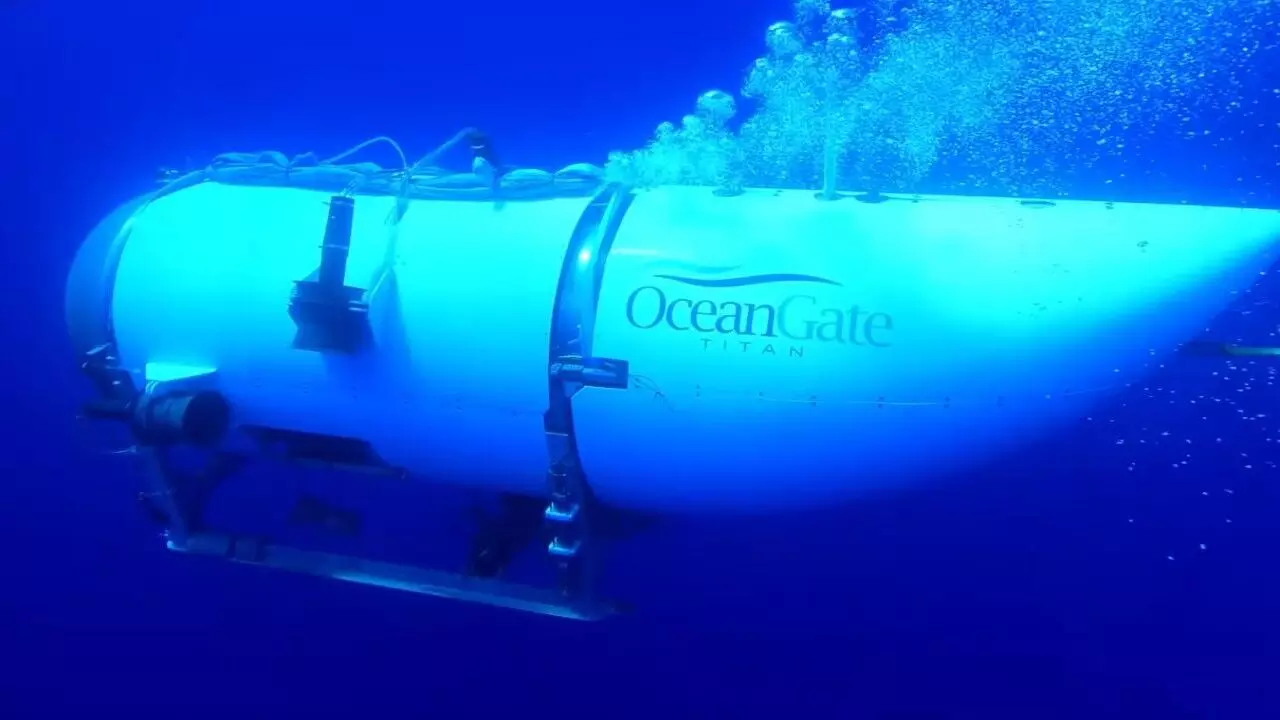
Netflix’s Titan: The OceanGate Disaster Exposes Alarming Truth Behind 2023 Sub Tragedy
Back in the summer of 2023, few stories cut through the noise like the Titan submersible disaster. Everyone was talking about it. News stations ran countdown clocks for the 96 hours of oxygen. Social media was flooded with theories, fear, and opinion after opinion. The sub, built and operated by OceanGate, vanished while on a commercial dive to the Titanic wreck site. Five passengers were onboard. And for several long days, the world hoped for a miracle. But the ending wasn’t a rescue. It was a tragedy.
Netflix’s new documentary Titan: The OceanGate Disaster, directed by Mark Monroe, takes that story and digs way deeper than a simple timeline of events. Instead of focusing just on the moment of implosion, it zooms out to show the years of choices, the red flags, and the relentless ambition that led to what many now call a preventable disaster.
A mission built on ambition
The Titan sub wasn’t just another deep-sea project. It was the brainchild of Stockton Rush, a man who dreamed of opening up the depths of the ocean to civilian explorers. He wasn’t just thinking about research or science. He wanted to make deep-sea tourism a thing. A real, purchasable experience for wealthy adventurers. OceanGate, the company he founded in 2009 outside Seattle, was built around that vision.
The goal was big. Traditional submersibles are made of steel or titanium, which are heavy and expensive. OceanGate wanted something lighter, cheaper, and still strong enough to survive the crushing pressures of the deep ocean. Their answer was carbon fiber. It’s a material known for being both lightweight and tough. It’s used in sports cars and airplanes. But here’s the thing — it had never been used at 3,800 meters below sea level.
Inside the risky design
One of the first people to raise concerns was David Lochridge, a seasoned submersible pilot who joined OceanGate with high hopes. At first, he was impressed by the team’s energy and Rush’s vision. But that changed fast. As Lochridge got more involved, he noticed serious design issues. The carbon fiber hull, for starters, showed signs of strain early on. The material wasn’t made to handle repeated dives to extreme depths. Each use slowly broke it down.
The documentary shows test footage from OceanGate’s development years. Carbon fiber hulls cracking under pressure in controlled simulations. Loud pops, visible delamination, and internal cracking that would have scared off most companies. But OceanGate kept going.
Rush dismissed the science. He called the cracking sounds “seasoning” — like the hull was just settling in. He insisted the sub was safe. Engineers and employees who raised flags were often shut down or ignored.
A toxic leadership culture
The documentary pulls no punches in exploring how Rush led OceanGate. It wasn’t a typical tech startup. According to former employees, it was run with the kind of bravado you’d expect from someone obsessed with Jeff Bezos and Elon Musk. The idea of “move fast and break things” wasn’t just a slogan — it was a strategy.
In a 2018 staff meeting, recorded and included in the film, Rush can be heard firing Lochridge. The reason? Lochridge had inspected the Titan and submitted a report saying he had no confidence in its safety. Rush’s reply? “We’re doing weird shit here.” He made it clear. If you questioned the vision, you were out.
Lochridge later filed a whistleblower complaint with the U.S. Occupational Safety and Health Administration (OSHA). OceanGate responded by suing him, claiming he leaked confidential information. The legal battle drained Lochridge financially and emotionally, eventually forcing him to withdraw his complaint. The one person trying to sound the alarm got buried by the very system meant to protect people.
The illusion of legitimacy
Throughout Titan’s development, Rush would often name-drop big institutions like NASA, Boeing, and the University of Washington. It sounded impressive. It made OceanGate seem official. But the documentary makes clear those relationships were misleading at best.
A Boeing engineer actually warned Rush in a 2012 email, saying the Titan had a “high risk of significant failure” before it even hit its target depth. There was no safety margin, they said. The University of Washington distanced itself. NASA had no formal partnership. But Rush kept pushing the narrative that OceanGate was working with the best in the business.
Worse, he refused to submit any of OceanGate’s vessels to third-party safety certification. In the world of deep-sea exploration, that’s unheard of. Certification from outside agencies is standard for a reason. But Rush believed OceanGate’s in-house systems were enough. He promoted a “real-time monitoring system” that was supposed to warn the crew if the sub’s structure was under stress. It’s unclear whether that system ever worked as promised.
A slow path to disaster
Between 2021 and 2022, Titan reportedly made 80 dives. Thirteen of those went all the way to the Titanic’s depth. That’s shocking, considering how unstable the design turned out to be. In one of the 2022 dives, OceanGate’s own data suggested the sub may have taken damage. The company downplayed it. Then came the final dive in June 2023.
Just 90 minutes into its descent, Titan imploded at around 3,300 meters below the surface. The five people onboard — Stockton Rush, explorer Hamish Harding, businessman Shahzada Dawood and his son Suleman, and French diver Paul-Henri Nargeolet — were killed instantly.
Audio of the implosion was captured 900 miles away by a NOAA device. According to the film, the sound likely reached Titan’s support ship before the last text message was even sent. On the surface, they had no idea the sub was already gone.
No oversight, no turning back
The documentary shows just how little outside oversight existed. Because the trips were marketed as “missions” and the passengers called “mission specialists,” OceanGate avoided certain commercial regulations. By framing the dives as educational or exploratory, not business ventures, the company slipped through loopholes.
Mark Monroe, the director, says what’s really terrifying isn’t the implosion itself. It’s the decade-long buildup. The countless small decisions that prioritized style over substance, speed over safety. At any point, someone could have stepped in. But no one did.
“It’s scarier, in a way, to understand the decision-making over the 10-year period that led to that moment,” Monroe says. “If the civilians had seen the decisions made along the way, they would have been a lot more reticent to get into that submersible.”
What happens now
The Coast Guard has yet to release its final report on the Titan disaster. There’s no official explanation or set of recommendations yet. The presumed cause is still hull delamination — a fancy word for the carbon fiber layers peeling apart under pressure. But the real root cause was everything leading up to that dive.
The Netflix film doesn’t use dramatized audio or high-stakes reenactments. It doesn’t need to. The story is chilling enough in real terms. With footage from inside OceanGate, interviews with whistleblowers, and actual documents from the company’s archives, Titan: The OceanGate Disaster presents a sobering look at how ambition, pride, and a lack of regulation can come together in the worst way possible.
Rush wanted to change the world. But he broke every rule along the way. And when it comes to science, physics, and the ocean — those rules aren’t optional. They’re absolute.
Popular Categories





